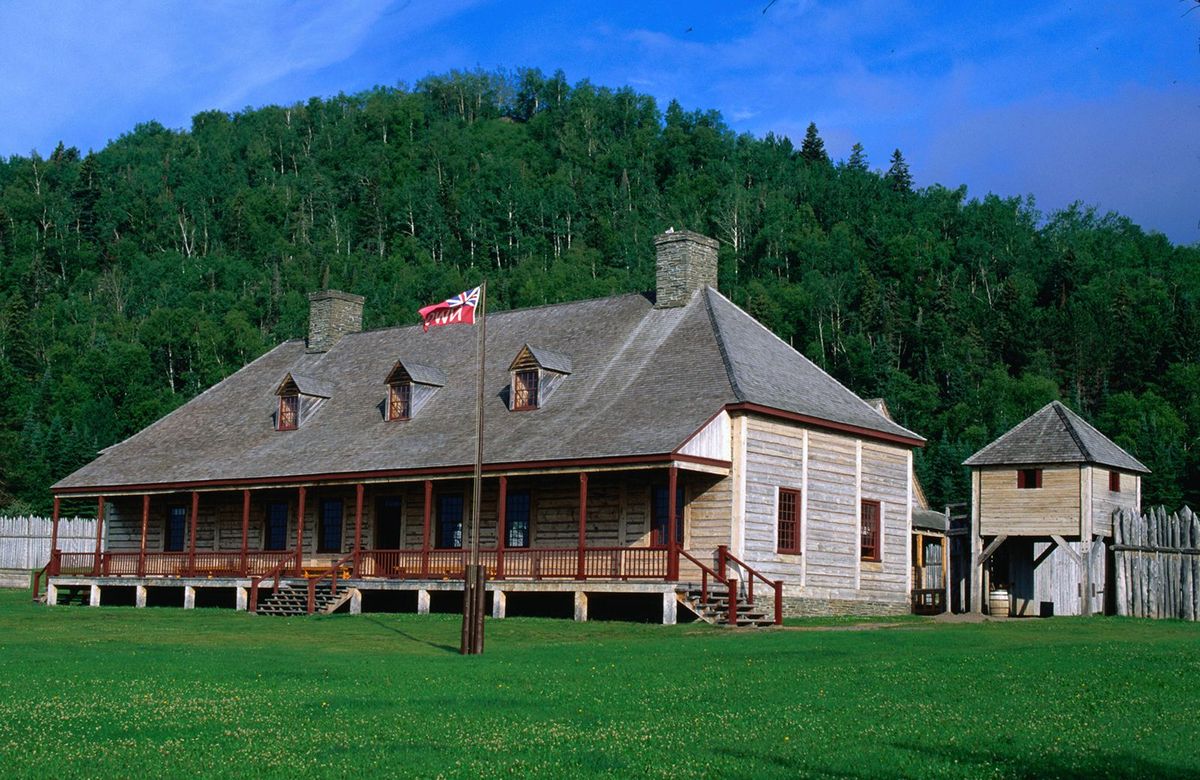Hidden Trading Posts Of Minnesota’s Grand Portage National Monument

Have you ever wondered what life was like for fur traders in the 18th century? Minnesota's Grand Portage National Monument offers a glimpse into this fascinating past. Located on the rugged shores of Lake Superior, this historic site was once a bustling hub for trade between Native American tribes and European settlers. Visitors can explore reconstructed buildings, walk the same paths as traders, and even participate in hands-on activities. Whether you're a history buff or just looking for a unique adventure, Grand Portage provides an unforgettable experience. Ready to step back in time and uncover the secrets of the fur trade? Let's get started!
Hidden Trading Posts of Minnesota's Grand Portage National Monument
Minnesota's Grand Portage National Monument is a treasure trove of history and culture. This area, rich in natural beauty, was once a bustling hub for fur traders and Native Americans. Let's uncover some hidden trading posts that played a significant role in shaping this historic site.
1. The Great Hall
The Great Hall stands as a testament to the fur trade era. This reconstructed building offers a glimpse into the lives of traders and Native Americans who once bartered goods here.
- Historical Significance: The Great Hall was the center of trade activities, where furs were exchanged for European goods.
- Architectural Marvel: The structure showcases traditional log construction techniques, providing insight into 18th-century building practices.
2. The Ojibwe Village
The Ojibwe Village highlights the cultural exchange between Native Americans and European traders. This area offers a unique perspective on the daily lives of the Ojibwe people.
- Cultural Exchange: The village demonstrates how the Ojibwe adapted European goods into their daily lives.
- Traditional Practices: Visitors can learn about traditional Ojibwe crafts, such as birchbark canoe building and beadwork.
3. The North West Company Depot
The North West Company Depot was a key location for storing and distributing trade goods. This site provides a deeper understanding of the logistics behind the fur trade.
- Logistics Hub: The depot was essential for managing the flow of goods between trading posts and European markets.
- Economic Impact: The North West Company played a significant role in the economic development of the region.
4. The Voyageurs' Encampment
The Voyageurs' Encampment offers a glimpse into the rugged lives of the French-Canadian fur traders known as voyageurs. These men were the backbone of the fur trade, transporting goods across vast distances.
- Daily Life: The encampment showcases the tools and techniques used by voyageurs during their long journeys.
- Cultural Heritage: Learn about the songs, stories, and traditions that voyageurs passed down through generations.
5. The Stockade
The Stockade served as a protective barrier for the trading post. This fortified area provides insight into the challenges faced by traders in the wilderness.
- Defense Mechanisms: The stockade was designed to protect against potential threats from rival traders and hostile forces.
- Living Quarters: Inside the stockade, visitors can explore the living quarters of traders and their families.
6. The Kitchen Garden
The Kitchen Garden was an essential part of daily life at the trading post. This garden supplied fresh produce to traders and their families, showcasing the importance of self-sufficiency.
- Agricultural Practices: Learn about the crops grown and the gardening techniques used during the fur trade era.
- Sustainability: The garden highlights the importance of sustainable living practices in a remote trading post.
7. The Blacksmith Shop
The Blacksmith Shop was crucial for maintaining tools and equipment used in the fur trade. This site offers a fascinating look at the skills and craftsmanship of blacksmiths.
- Tool Maintenance: Blacksmiths repaired and crafted tools essential for daily life and trade.
- Craftsmanship: The shop showcases the artistry involved in blacksmithing, from forging iron to creating intricate designs.
8. The Canoe Warehouse
The Canoe Warehouse stored the birchbark canoes used by traders and voyageurs. This building highlights the importance of canoes in the fur trade.
- Transportation: Canoes were the primary mode of transportation for traders, allowing them to navigate the region's waterways.
- Construction Techniques: The warehouse provides insight into the craftsmanship involved in building durable and efficient canoes.
9. The Trading Post Museum
The Trading Post Museum offers a comprehensive overview of the fur trade era. This museum houses artifacts and exhibits that tell the story of the people who lived and worked at Grand Portage.
- Artifacts: Explore a collection of tools, clothing, and other items used by traders and Native Americans.
- Educational Exhibits: The museum provides educational displays that explain the history and significance of the fur trade.
10. The Rendezvous Site
The Rendezvous Site was the location of annual gatherings where traders, Native Americans, and voyageurs met to exchange goods and stories. This site captures the spirit of camaraderie and cultural exchange.
- Annual Gatherings: The rendezvous was a time for celebration, trade, and socializing.
- Cultural Exchange: The site highlights the blending of cultures and traditions that occurred during these gatherings.
Discover the Hidden Gems of Grand Portage
Minnesota's Grand Portage National Monument offers more than just beautiful landscapes. It’s a place where history comes alive through hidden trading posts and ancient trails. Exploring these sites gives a glimpse into the lives of the Ojibwe people and fur traders who once thrived here. Walking the same paths they did, you can almost hear the echoes of the past.
Visiting Grand Portage isn’t just about seeing; it’s about experiencing. The stories, artifacts, and natural beauty make it a must-visit for history buffs and nature lovers alike. Whether you’re hiking the trails or visiting the reconstructed trading post, every corner of this monument has something to teach.
Plan your trip to Grand Portage and uncover the hidden gems that make this place special. You won’t just visit history; you’ll live it.

